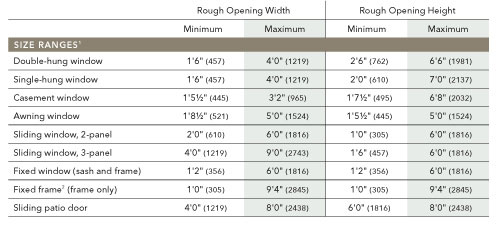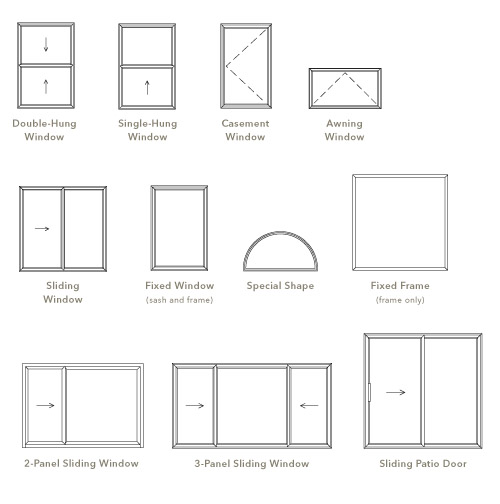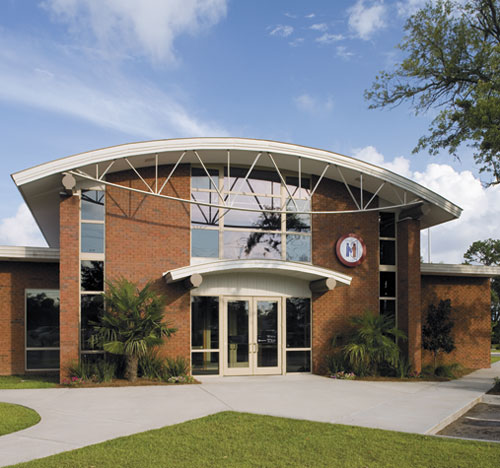Fiberglass Windows: A Sustainable Choice in Non-Residential and Multi-Family Buildings
Window Design Options
In commercial and institutional settings, the windows and fenestration plan play a key role in the overall design and performance of the building. Since variety and customization is often desired, it is important to realize that these options exist from virtually all fiberglass window manufacturers, although to varying degrees. Nonetheless, it is entirely possible to pick a window system that is ideally suited to the needs of a particular project in terms of size, scale, and proportion. In order to grasp this diversity of options, the descriptions below are intended to outline the possibilities in terms of common types, styles and configurations of fiberglass windows.
Operable Windows
In an era when greater natural ventilation is required to meet green building requirements and general human comfort, operable windows are becoming more common in commercial buildings of many types. Of course, they have always been desired or required in multi-family housing and schools, but fiberglass windows often provide more options than have commonly been available before. Maximum window sizes will be determined in part by the type of window selected, but they are generally consistent with the scale and size that would work with most building designs. (See Figure 5.)Â Â Operable fiberglass window options include:
- Single- and double-hung windows. Among the available types, single and double-hung windows are common in some applications. Single-hung windows have a fixed top sash and an operable lower sash, while in double-hung windows, both sash move up and down. Typically all of the operable sashes are removable or tilt-in to allow the exterior glass to be cleaned from inside the building, thereby reducing maintenance costs for exterior cleaning crews, especially in multi-story buildings.
- Casement windows. Commonly available in operable sizes up to approximately 3' wide x 6'-8" high, casement windows feature a typically vertical rectangular or square appearance with side hinged operation. Limited-opening and egress hardware are also commonly available as manufacturer options if needed. Â In terms of cleaning, the sash usually moves toward the center of the frame, making it easy to clean exterior glass from inside the building on any story. Casement windows are typically more energy efficient because the locking hardware lifts and pulls the sash against the weather-stripping to form a tighter air seal than in single or double hung windows.
- Awning windows. Similar in operation to casement windows, awning windows hinge from the top and open out at the bottom with the operating handle located either at the sill or jamb. This arrangement allows for ventilation from below but sheds any unexpected rain falling from above. Commonly available in operable sizes up to 5' wide x 5' high, awning windows can also be configured with optional limited-opening hardware for safety. Awning windows generally use the same type of locking hardware as casements which make them comparable in terms of energy efficiency.
- Sliding windows. Commonly available in two- and three-panel configurations and a variety of sizes, sliding windows can be combined with fixed sash to provide a broad range of design, ventilation and egress solutions at a commonly competitive price point.
  |
Figure 5: Fiberglass windows can be operable or fixed and can come in a variety of shapes and sizes. Images courtesy of Pella Corporation |
Fixed Windows and Fixed Frames
In situations where operable windows are not needed or desirable, fixed in place units are available in fiberglass and deserve consideration. Not only do fiberglass units offer a similar appearance to other choices, they are commonly available in a variety of shapes as well as sizes. Polygons, arches, circles, trapezoids, and other custom shapes are typically among the design options. (See Figure 6.) There are basically two types of units to choose from depending on the design requirements of a project:
- Fixed windows have an outer frame plus a non-operable sash that holds the glazing. They offer views and natural daylight, but typically at a lower cost than operable windows. Since fixed windows are often paired with operable windows, the pairing of a fixed sash and frame allow the fixed and operable windows to look alike for a consistent appearance and aesthetic effect across the building.Â
- Fixed frames, unlike fixed windows, do not have a sash. They offer the design flexibility of fixed aluminum glazing systems, while providing significantly improved energy efficiency resulting in lower energy costs, better U-Factors, greater resistance to condensation and superior thermal comfort. Unlike aluminum systems that are glazed in the field, fixed fiberglass frames are glazed in a controlled factory environment, maximizing quality while reducing field installation time. And specialty sub-contractors are not typically needed to install these pre-finished, pre-glazed windows, rather, the general contractors may choose to do so with their own workforce. Fixed frames can produce a final effect that allows a range of sightlines to be achieved, depending on how the glass is subdivided to meet the design intent.
  |
Figure 6: Fiberglass windows shown installed in different sizes, shapes, and configurations Images courtesy of Pella Corporation |









